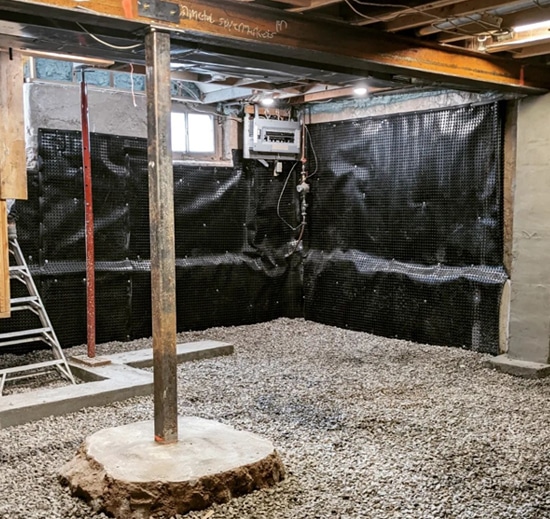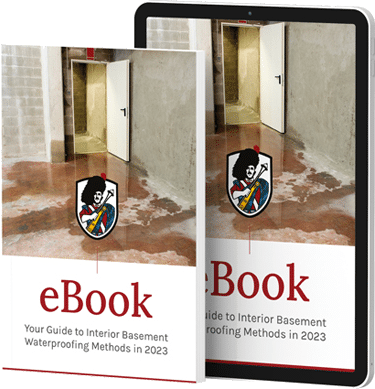
Brickwork & Parging Toronto & GTA
Are you looking for flawless brick restoration and expert parging repair? Trust GJ MacRae’s masonry experience.
Our Services Are Trusted By








Brickwork and Parging: Restore the Beauty
Brickwork is a piece of art that can enhance your home’s beauty. Bricks are “Beauty and the Beast” in one. Beast because they are strong building materials that can last for centuries, and beauty because they look beautiful and elevate the appearance of your house. Occasional upkeeping of your brick walls can work wonders and maintain the beauty of your home. New contractors just like to use modern building materials without keeping in mind the beauty aspects of these period properties. Houses made in the Victorian, Edwardian and Georgian eras had impressive brick facades, and the restoration must be the same as the original. These buildings could breathe because of their brick architecture and this is one of the main reasons for their health and longevity. Using the correct repointing can assist in stabilising the walls of the structure and enhance the visual qualities of brick walls.
One of the most common problems of these old buildings is the flaking bricks and spalling stones. Repointing these walls with modern materials like cement mortar mixture causes the walls to trap moisture inside them and causes damp wall problems. The repointing should be carried out using lime mortar( Natural Hydraulic lime). These work best for old buildings where brick restoration and stonework are needed. Lime mortar is a flexible material, and minor cracks over the years can self-heal. If you have an old home which needs brickwork and parging repairs, contact GJ MacRae foundation repair. We repair your home and also restore the original look.

Brickwork Restoration Experts in Toronto
GJ MacRae is a complete basement waterproofing and foundation repair company in Toronto. We love to take on heritage projects requiring specialist brickwork repair elements. We love to restore old buildings to their former glory. At a time when cutting corners is the norm in home building, knowing what materials and techniques that are needed to restore an arched doorway, for example, is becoming a lost art. But GJ MacRae is rooted in old-school building techniques. We have carried out hundreds of jobs related to the brickwork restoration of old buildings. Our main priority is to restore the original look of the building while also strengthening the walls. We use Natural hydraulic lime mortar that provides strength and flexibility to the structure.
Having worked on hundreds of different restoration projects in the course of 48 years, we can carry out your project with all the experience that we have accumulated. GJ MacRae, the best brick restoration company in Toronto, is the right team for your brickwork restoration project.
The GJ MacRae Brick Restoration Process
GJ MacRae takes every project seriously and puts in years of experience and skills while performing any job. We know the importance of originality in these homes. We like integrating our old-school techniques with modern approaches to maintain the original beauty and strengthen the structure. Our team arrives at your site and thoroughly evaluates your brickwork. The current condition of bricks and mortar is assessed, and issues and damages are noted down. The original structure of the brickwork is closely studied to deliver similar results after restoration.
We then proceed to clean the bricks. Bricks accumulate dirt, dust and other contaminants over time that need cleaning. Now after the surface is cleaned, we prepare the mortar mixture. We have already mentioned how we used natural hydraulic lime mortar mixtures. Over time the old mortar mixture starts deteriorating and needs repair. We then use the lime mortar mixture to repair and replace the mortar joints and ensure proper bonding between the bricks.
We then perform tuckpointing and joint restoration on the bricks. We remove the old mortar mixture and replace it with fresh lime mortar mixture. This helps to give a clean and uniform appearance to the brick structure. Also, the structural integrity of the brickwork is highly enhanced by this. If we find any cracked, damaged or missing bricks, we replace them with matching bricks. Remember, restoring the original look is the goal for us. We use a replacement brick with consistent colour, texture and size to blend in with the old bricks. This creates a seamless integration and helps maintain the structure’s visual consistency. This is how we perform brickwork restoration for your home.

5 Step Repair Process:
01
Scope of Work
02
The Robust Choice
03
Remedy For The Future
04
Cost Vs Workmanship
05
Drainage!
Why Choose GJ MacRae?
- Highest Rated Customer Service: Customer satisfaction is our primary goal. We will work with you closely to understand your needs and provide the best solution to your foundation repair project.
- Comprehensive Services: With GJ MacRae, homeowners can find all foundation repair solutions under one roof. From foundation crack repair to exterior waterproofing and weeping tile installations, we have the expertise and resources to address your complete waterproofing needs from start to finish.
- Extensive Experience: With nearly 50 years of experience in the industry, GJ MacRae is known for delivering quality, long-term basement waterproofing solutions while tackling even the most challenging waterproofing projects with confidence and expertise.


Protect Your Foundation
- Competitive Pricing: GJ MacRae offers competitive basement waterproofing services without compromising quality. We provide transparent, fair quotes that ensure homeowners receive the best long-term value.
- Quality Materials: GJ MacRae uses high-quality repair materials combined with the latest waterproofing techniques, and we are experts in all phases of basement waterproofing. Plus, we offer innovative solutions that guarantee long-lasting protection against water infiltration.
- Protect Your Investment: When protecting your foundation walls and basement from water damage, choosing GJ MacRae Foundation Repair for basement waterproofing in Toronto ensures you receive the highest quality repair solution to safeguard your foundation long-term.
Basement Waterproofing and Foundation Repair Projects in Toronto and the GTA
Some Kind Words From Our Customers
Download Our Free eBook
We’re honored to provide these resources to help you on your journey, and we know reputations are hard to build and easy to lose. That’s why our business is built around two simple promises:
Honesty and Transparency.
We genuinely want each step of your journey (from the very first Google search to a leak-free basement) to be positive!

What Does quality Foundation Repair Look Like?
RECENT PROJECT PHOTOS
RECENT PROJECT VIDEOS
Restore Your Brickwork Today!
Brickwork is beautiful and gives that classic look. But over the years, brickwork structures go through sun and water cycles and can lose their original charm. GJ MacRae Foundation Repairs presents you with brickwork restoration and parging services to resurrect the original beauty of your home.
If you need brickwork restoration services, make sure to give us a call. Our team will inspect your current situation and provide an ideal restoration solution for your property. Feel free to contact us at (905) 824-2557 or fill out the form below.

Our Service Areas
At GJ MacRae, we take pride in extending our services across the GTA to meet our valued customers’ unique needs, and our dedicated team is committed to delivering top-notch solutions all year long. Our expansive service areas are a testament to our unwavering commitment to the highest quality foundation repair services and customer satisfaction in the GTA.
Schedule a Free Consultation Today
Fill out our request form and we will contact you as soon as possible for a free foundation repair consultation!
Frequently Asked Questions
Expert Waterproofing Services for Your Home
GJ MacRae Foundation Repair has been the industry leader for reliable basement waterproofing in the Greater Toronto Area Since 1975. Nearly five decades of experience inform our proven multi-stage repair process based on below-grade drainage considerations that allow us to waterproof concrete blocks, poured walls, and stone rubble foundation walls properly for the long term. Our repair solutions for leaking foundation cracks include using bitumen-based barrier membranes and high-efficiency weeping tile systems, which give us the edge in reliability and allow for the most robust foundation repair warranty available today in the GTA. Experience the GJ MacRae difference for year-round basement leak repairs in Toronto, Oakville, Mississauga, Burlington, Hamilton, Milton, and Georgetown. If you spot cracked foundation walls, leaky foundations, or any other basement waterproofing issues in your house, reach out and call us today at (905) 824-2557.
Quality Foundation Repair Done Right.
The Original Wetbasements Experts
Serving Toronto and the GTA Since 1975






